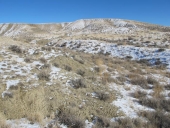





















 , but I'll see how many my small market can absorb. I had no idea how expensive these things were. I'm gonna be rich, RICH !!!
, but I'll see how many my small market can absorb. I had no idea how expensive these things were. I'm gonna be rich, RICH !!!



 The only other maintenance issue would be to bail or sponge out any water that gets in. Since it's below pond level, a floor drain would not work.
The only other maintenance issue would be to bail or sponge out any water that gets in. Since it's below pond level, a floor drain would not work.


 It's safer than a swing rope. With ropes launched from a high point on land, some idiots fail to let go of the rope while they are over water. Others lose their grip or change their minds after it's clearly too late, choosing instead to skid their half naked bodies along mud, rocks and gravel , ending their journey in a crumpled pile at the pond's edge. YouTube is filled with videos of many kids with poor strength to weight ratio, meeting this awful fate. This is a great way to thin the herd.
It's safer than a swing rope. With ropes launched from a high point on land, some idiots fail to let go of the rope while they are over water. Others lose their grip or change their minds after it's clearly too late, choosing instead to skid their half naked bodies along mud, rocks and gravel , ending their journey in a crumpled pile at the pond's edge. YouTube is filled with videos of many kids with poor strength to weight ratio, meeting this awful fate. This is a great way to thin the herd. 

 Visitors will never use these things until liability insurance is in place.
Visitors will never use these things until liability insurance is in place.











 ---------------
---------------
 1
1









 ---- Luckily, the remedy for this involves applying lime. Lime is cheap. If you overdo it, pump in some acidic water or just wait. The deepest part of ponds tend to be the most acidic, due to all the crap that accumulates. The depths also tend to be the most oxygen poor. Have I touched on what to do with bottom muck ?
---- Luckily, the remedy for this involves applying lime. Lime is cheap. If you overdo it, pump in some acidic water or just wait. The deepest part of ponds tend to be the most acidic, due to all the crap that accumulates. The depths also tend to be the most oxygen poor. Have I touched on what to do with bottom muck ? 
 ----------- I think we're done with water issues for now.
----------- I think we're done with water issues for now.





Order copies of my book, Dairy Farming: The Beautiful Way at
www.createspace.com
Help spread the word! Thanks!
struggle - hustle - soul - desire






















"Instead of Pay It Forward I prefer Plant It Forward" ~Howard Story / "God has cared for these trees, saved them from drought, disease, avalanches, and a thousand tempests and floods. But he cannot save them from fools." ~John Muir
My Project Page




Michael Newby wrote:Great stuff here Dale, lot's to muse over. On the pond aeration, have you looked into airlift pumps? They can move quite a bit of water using just an air compressor, which is more efficient than a pump. Check out this video from a Koi enthusiast: http://www.youtube.com/watch?v=I1uBybsdXHQ




Dale Hodgins wrote:If they truly are more efficient than regular pumps, I'd like to go with air. I want to send water to elevated storage. Any overflow would come back to the pond.
Buy Our Book! Food Web: Concept - Raising Food the Right Way. Learn make more food with less inputs
Off Grid Homesteading - latest updates and projects from our off grid homestead

|
Getting married means "We're in love, so let's tell the police!" - and invite this tiny ad to the wedding:
The new kickstarter is now live!
https://www.kickstarter.com/projects/paulwheaton/garden-cards
|




